Text & photos by: Chelsea Behymer, Science Outreach Coordinator
Wildlife camera images courtesy of: LEKT, NPS, USGS
The novel and the rare are precious, invigorating things. During our lunch break, we savor the sunshine that envelops an emergent meadow on the floodplain of the Elwha River even more than our food on a crisp, clear Winter day. I’ve just helped Lower Elwha Klallam Tribe (LEKT) Natural Resources Department wildlife biologist Sara Cendejas-Zarelli install camera traps on a well-established American Beaver dam that her team had first observed the previous Summer. She had brought the extra cameras along as a potential additional task to the main objective of replacing memory cards and batteries on existing camera “traps” – established sites where motion-activated cameras capture wildlife using or moving through the area over time.
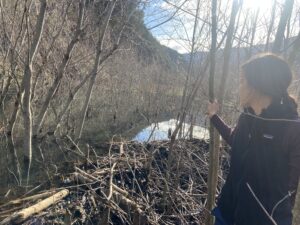
Sara reflects on how much water has flooded behind the now well established dam since Summer.
It’s exciting to imagine what activity the cameras will capture.
The two of us were part of a larger team consisting of three other LEKT researchers and a volunteer that had decided to split forces to check all cameras spread along a two mile stretch of the river. Efficiency on a field research day is key to planning logistics. Sara and I would hitch a ride up a no longer maintained road to the Eastern overlook of the former Glines Canyon dam and from there would pedal to a game trail accessing the upper lakebed sites on river right. The remaining team members would divide and hike from the remnants of the dam abutment to cameras on either side of the river.
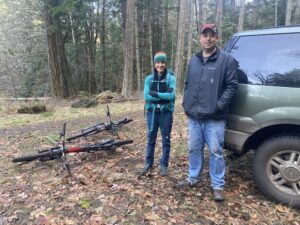
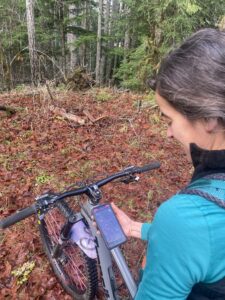
Let the field day relay begin! LEKT wildlife technician Mike Sheldon drops Sara, myself and our bikes off at the overlook (left); we check the map to make sure we’ve arrived at the spot where we will stash our bikes and access the cameras we will locate using GPS.
The beaver dam we encountered in the upper survey area is just one example of the discoveries that have added to the increasing complexity of the lower Elwha’s riparian ecosystem and researchers’ understanding of the dynamics of its recovery. Wrapping up our lunch, Sara makes radio communication with the rest of the team; I listen as they relay our individual and collective mission successes. As we scale back up the steep bank to where we had stashed our bikes, Sara tells me more about the work she’s contributed to over the years since Lake Mills emptied in 2014.
“It was a blank slate. Not only in terms of a dried up lake bed, but also the research questions that we could ask and pursue. At first we were really just interested in looking at what wildlife moved into the newly formed habitats devoid of life–ranging from the earliest colonizers–insects, songbirds, rodents, and now on up to deer and larger species as the vegetation has continued to grow.”
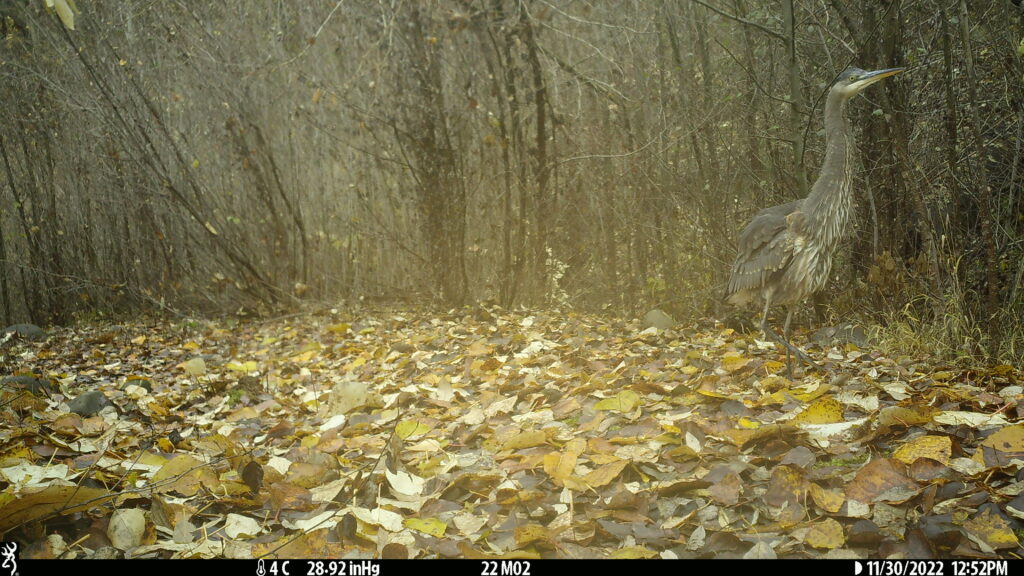
Motion-activated cameras capture not only mammals, but other wildlife that are important parts of the ecosystem such as birds, contributing to our understanding of the variety of species that use the area in addition to how they interact with it and when.
Data collected by cameras help to add context to focused efforts that have emerged from initial wildlife surveys, such as the Olympic Cougar Project. Large cats maintain extensive home ranges to hunt and find mates; collaring cats and monitoring their movements helps ecologists learn exactly what those numbers are. In some parts of Washington state, a mature male cougar may occupy up to 250 square kilometers! Wildlife researchers are still in the process of estimating the home ranges of cats on the Olympic Peninsula, which is an example of the collaboration necessary among tribes, as well as state management agencies to study an ecosystem as complex as the Elwha valley, which is connected beyond the arbitrary borders on a map. Entities must work together to collect and share information across the human-made boundaries such as transportation infrastructure and property as predictably as they might natural barriers like large rivers.
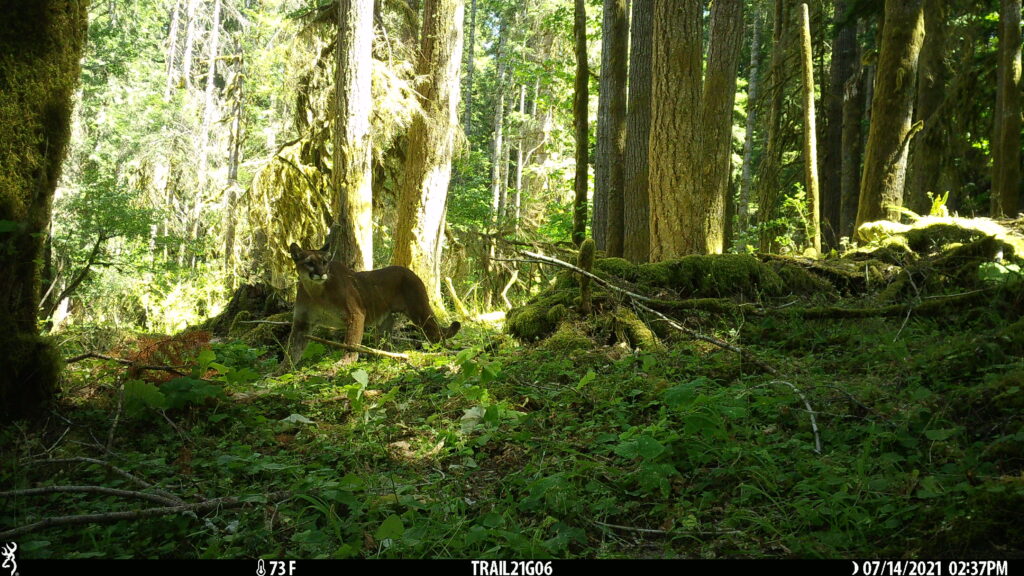
Biologists are always intrigued to see cats without collars captured on the cameras. It may be an individual born elsewhere, looking for a place to call home or even a resident that has eluded tracking efforts.
People have followed in the footsteps of wildlife throughout the Elwha valley for thousands of years, cultivating knowledge over generations of careful study. Playing back the images as they appear on the camera screen and then reviewing them later that day back in the office is a rare sort of instant gratification in science, revealing just a little insight with each batch of photos collected. While tempting to draw conclusions from an interesting photo or series, it is only over time that each image and related observations will contribute to the rich and complex story of an ecosystem restoring and relearning its plant, animal and human connections.
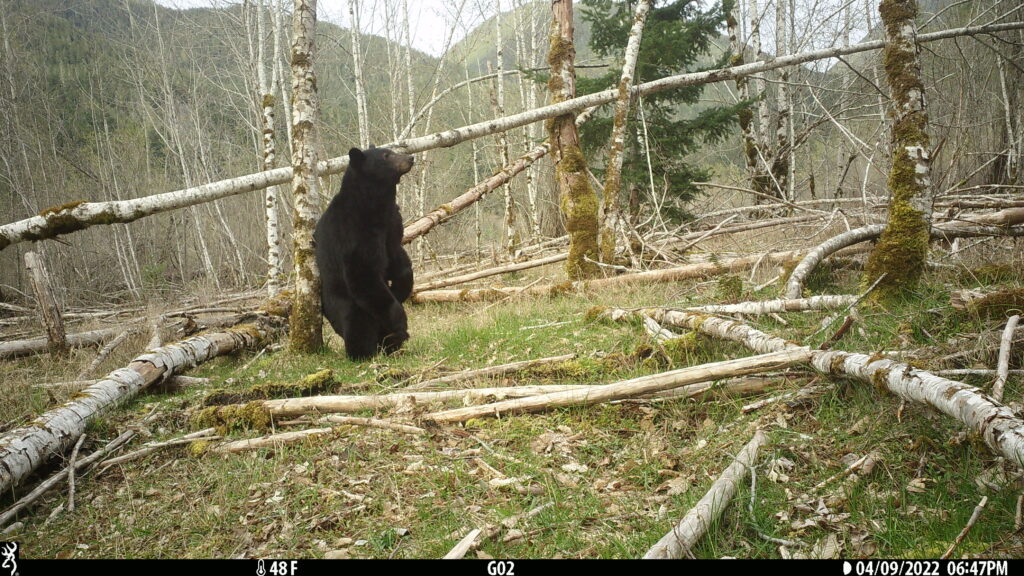
Cameras capture candid moments of resident animals like this American black bear (above) and the occasional curious visitor, such as this LEKT wildlife research team (below).
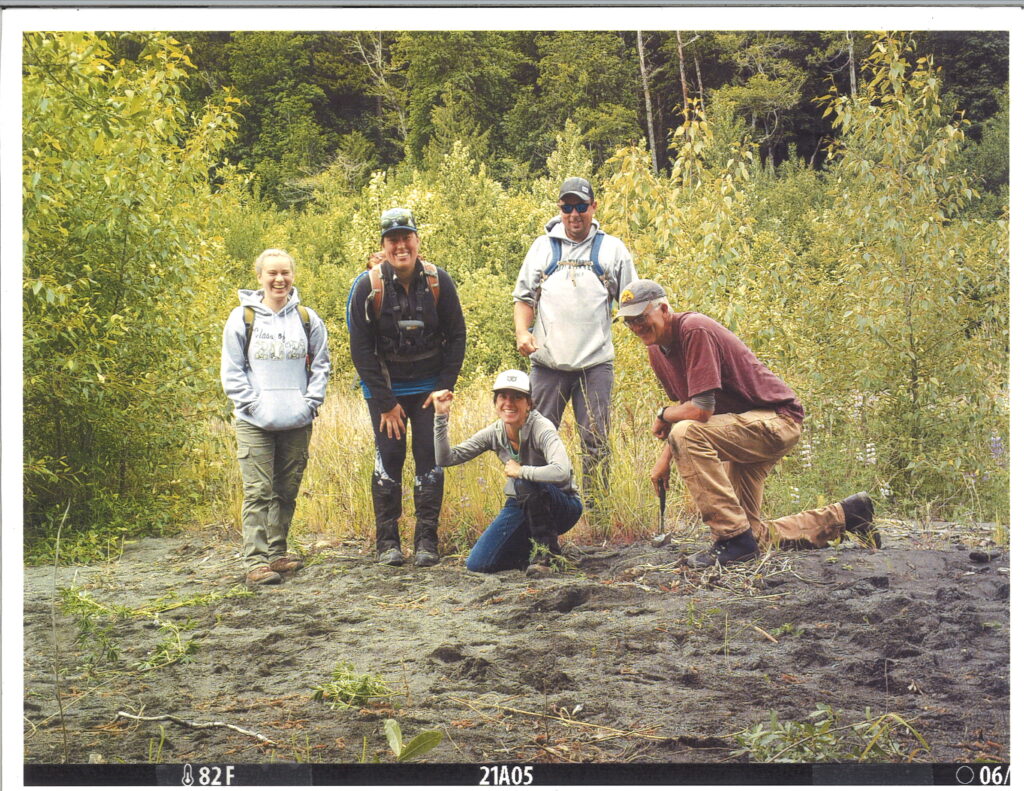
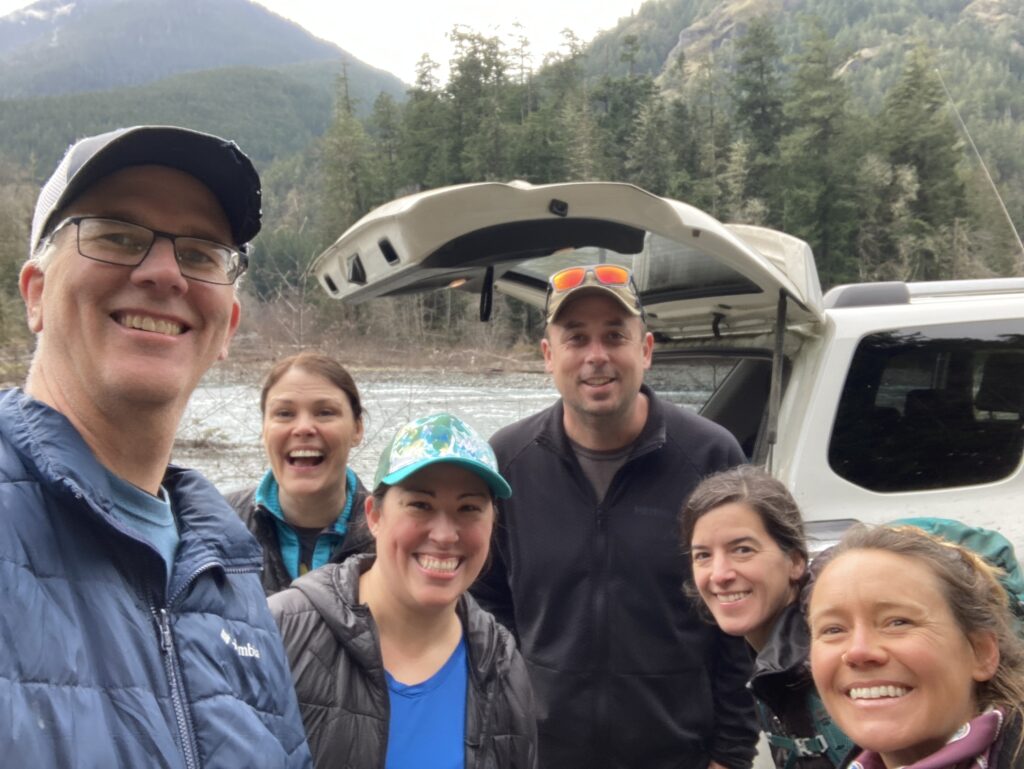
The whole wildlife field day relay team reunites at the end of a successful day (left to right): Dave Manson, Tia Skerbeck, Vanessa Castle, Mike Sheldon, Sara Cendejas-Zarelli, and Chelsea Behymer.
